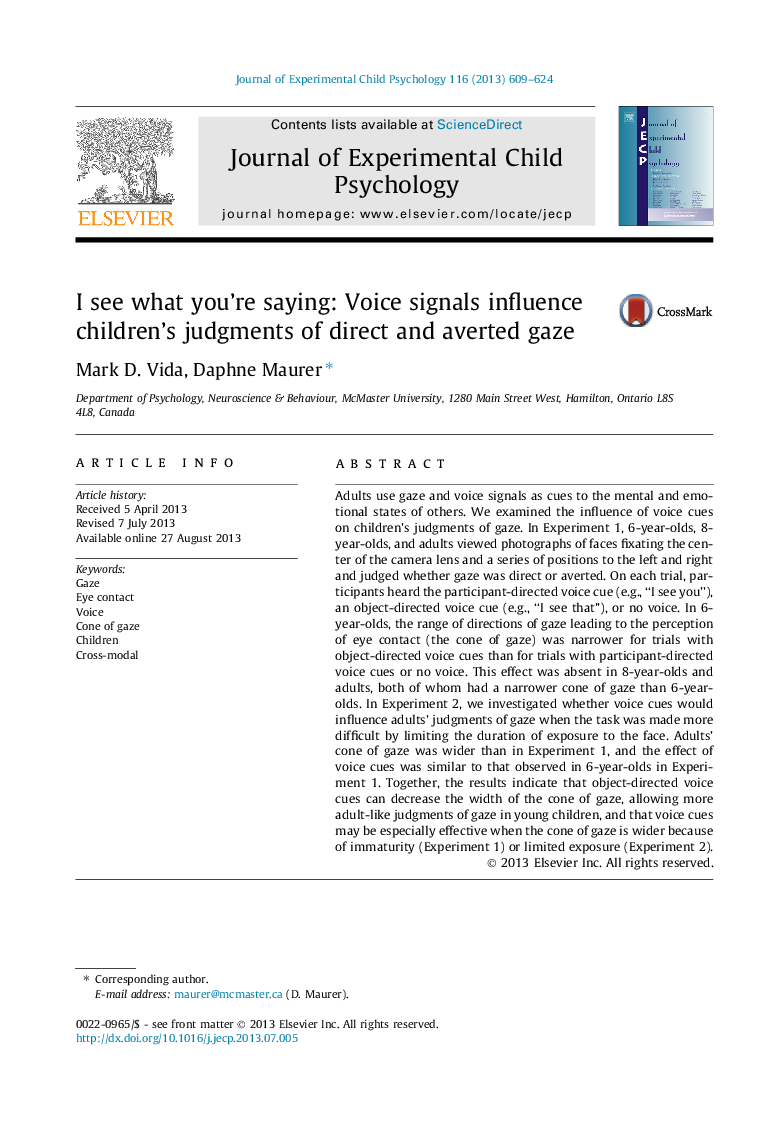| Article ID | Journal | Published Year | Pages | File Type |
|---|---|---|---|---|
| 10453059 | Journal of Experimental Child Psychology | 2013 | 16 Pages |
Abstract
Adults use gaze and voice signals as cues to the mental and emotional states of others. We examined the influence of voice cues on children's judgments of gaze. In Experiment 1, 6-year-olds, 8-year-olds, and adults viewed photographs of faces fixating the center of the camera lens and a series of positions to the left and right and judged whether gaze was direct or averted. On each trial, participants heard the participant-directed voice cue (e.g., “I see you”), an object-directed voice cue (e.g., “I see that”), or no voice. In 6-year-olds, the range of directions of gaze leading to the perception of eye contact (the cone of gaze) was narrower for trials with object-directed voice cues than for trials with participant-directed voice cues or no voice. This effect was absent in 8-year-olds and adults, both of whom had a narrower cone of gaze than 6-year-olds. In Experiment 2, we investigated whether voice cues would influence adults' judgments of gaze when the task was made more difficult by limiting the duration of exposure to the face. Adults' cone of gaze was wider than in Experiment 1, and the effect of voice cues was similar to that observed in 6-year-olds in Experiment 1. Together, the results indicate that object-directed voice cues can decrease the width of the cone of gaze, allowing more adult-like judgments of gaze in young children, and that voice cues may be especially effective when the cone of gaze is wider because of immaturity (Experiment 1) or limited exposure (Experiment 2).
Related Topics
Social Sciences and Humanities
Psychology
Developmental and Educational Psychology
Authors
Mark D. Vida, Daphne Maurer,
